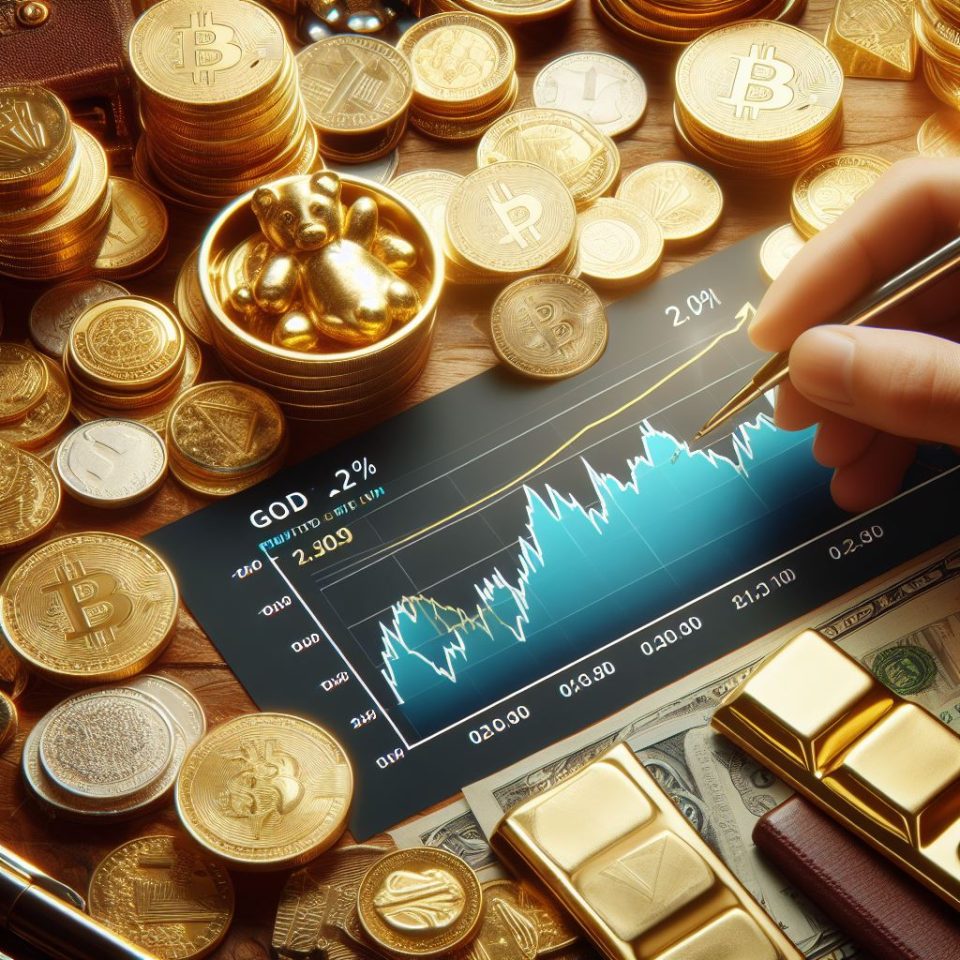Gold prices saw a sharp drop of more than 2% on Monday, reaching a one-week low, as concerns over a potential escalation in the Middle East abated, prompting investors to move away from safe-haven assets and towards riskier options like equities.
The drop in gold prices was fueled by a reduction in worries about a broader conflict in the Middle East. Tehran downplayed Israel’s retaliatory drone strike against Iran, signaling a desire to avoid further escalation in the region. Daniel Ghali, a commodity strategist at TD Securities, noted that the perceived risk of immediate retaliation in the Middle East had diminished, leading to increased selling activity in gold.
The easing of geopolitical tensions coincided with gains in Wall Street’s main indexes, further diminishing the appeal of safe-haven assets like gold. Spot gold plummeted by 2.3% to $2,336.29 per ounce, marking its most significant intra-day drop in over a year. U.S. gold futures also experienced a notable decline, sliding 2.7% to $2,349.70.
Gold had surged to a record high of $2,431.29 on April 12th, driven by geopolitical tensions and robust central bank buying. However, the recent de-escalation in the Middle East, coupled with a positive market sentiment, led to a sell-off in the precious metal.
Investors are now eagerly awaiting the release of the U.S. personal consumption expenditures (PCE) report on Friday for insights into the potential trajectory of U.S. interest rates. Chicago Federal Reserve President Austan Goolsbee remarked that progress in controlling inflation has stalled this year, indicating a shift away from earlier expectations of imminent rate cuts.
Ghali suggested that gold could retest its all-time highs if the PCE report surprises with a cooling inflation trend. He also highlighted the continued buying activity in Asia, where gold is considered a hedge against currency depreciation.
In addition to gold, other precious metals also experienced significant declines. Spot silver dropped by 4.6% to $27.35 an ounce, while platinum fell by 1% to $922.00. Palladium, often used in catalytic converters for vehicles, saw a decline of 1.8% to $1,008.25.
Heraeus Metals pointed out that any improvement in internal combustion engine (ICE) vehicle sales compared to battery electric vehicle (BEV) market share could support the price of palladium.
The drop in gold prices on Monday was largely influenced by the easing of tensions in the Middle East, as geopolitical concerns took a back seat, leading investors to shift their focus towards riskier assets. While the precious metal’s decline was significant, attention now turns to upcoming economic data releases for further insights into market direction and potential movements in gold prices.

